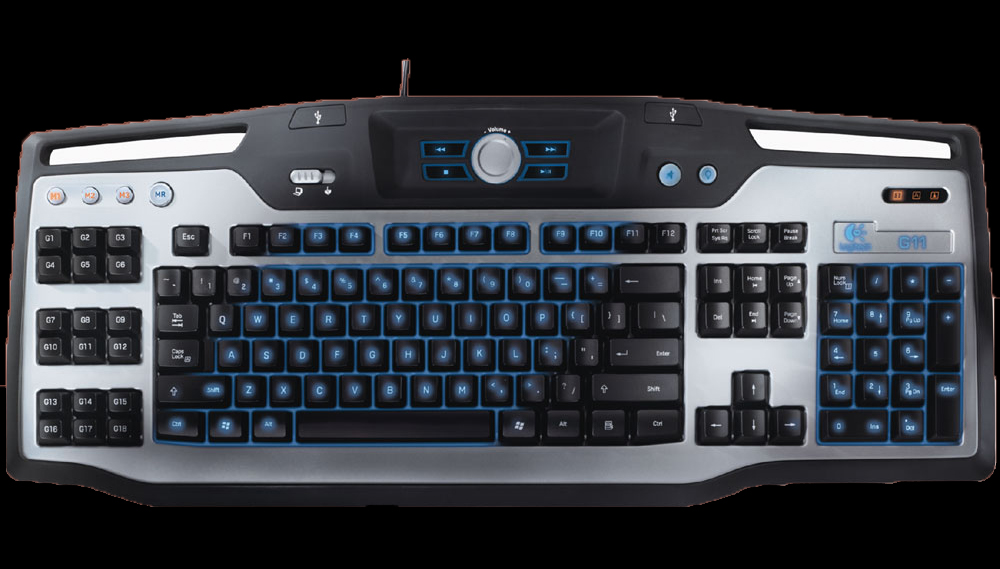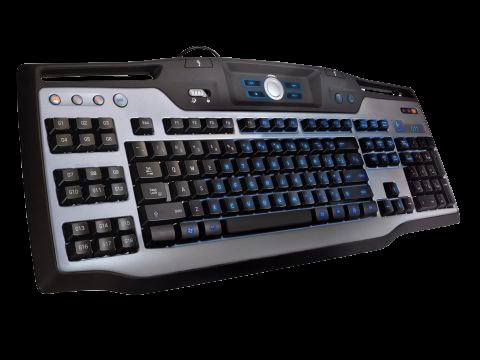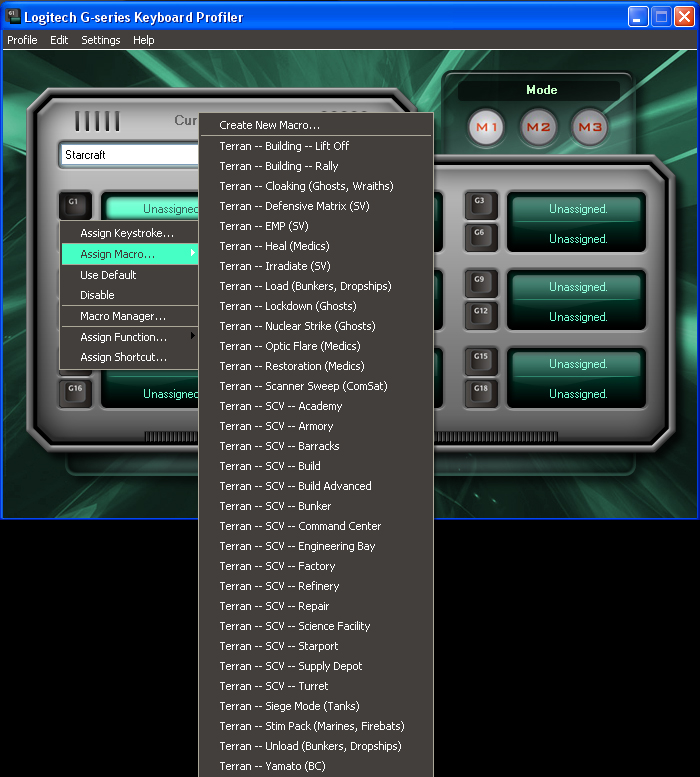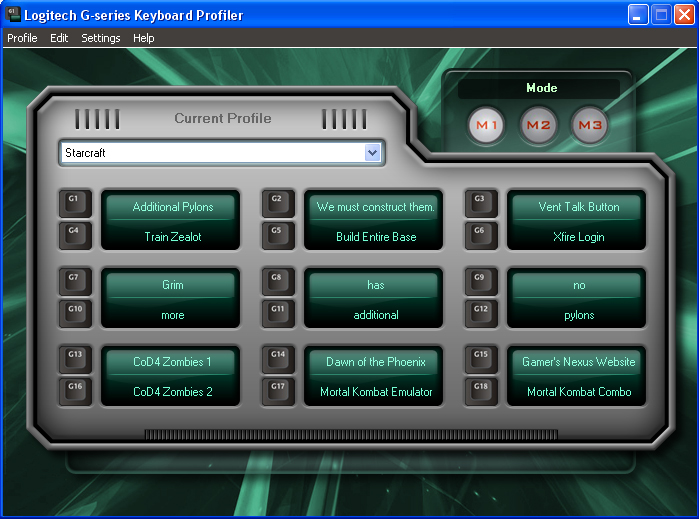Flashy colored lights seem to be the newest trend in technology. Every other fan, keyboard, and mouse now ship with blue, green, or red LEDs, and depending on the point of view, this either looks cool or blinds the observer. The Logitech G11 keyboard, armed with blue LEDs and two USB sockets, is no different.
Equipped with 18 programmable buttons, all on the left side, this keyboard is ready to handle just about any macro you throw at it. The drivers that manage these buttons also permit the user to set three different keysets; this means you can use a different macro grouping for up to 3 different games. Located in the upper-center of the keyboard is a well-placed media control panel. The Media CP includes: A Volume Rotator, Pause/Play, stop, and skip buttons. I find the rotator conveniently positioned and easy to use, not to mention readily available to whirl to the left when that really loud guy joins your favorite VoIP server. It's also useful when you are the last person alive on a team in any generic FPS, because you can effortlessly spin it to the right to hear your opponents' footsteps (without minimizing). Unlike many recently tested keyboards, the media center on this one actually works with your default media-playing program (i.e. Windows Media Player, Winamp, etc.) even when another window is maximized. This enables the user to play/stop or skip songs in a playlist while gaming or 'working.'
Unfortunately, the additional 18 buttons extend the keyboard to the left an extra three or four inches, make sure you have enough desk space. This flaw is countered by the simplicity of mapping the keys using Logitech's built in driver, even while playing games. One of the more obvious issues with having so many new keys is that many of the buttons are simply too far away to use. It ends up being more of a hit to precision and speed to use the distant panels (shown below) than to smash the ability numbers and weapon slots the old fashioned way.

One of the additional issues that comes along with gaining access to an arsenal of new buttons is remembering which does what and where it is. While gaming, it is easy to accidentally push buttons that aren't usually there. For example: I bound G9 to my web browser in hopes of being more efficient, but whenever I minimize or close my game, I am faced with a multitude of unintentionally launched Mozilla apps. It occurred to me that I had been so used to 'Esc' being in the top left, that I had mistakenly pressed G1 thinking it was the escape key. Basically, the keyboard takes some getting used to. The drivers actually ship with some pretty sick "gaming profiles" pre-installed. StarCraft is one of these profiles, wherein the user can find all the macros they will need during an intense game. Like what? Well, hot-selecting your Gateway, training a Zealot, and then building a pylon all with one button.

The blue lights also deserve mention. Each key is backlit with a blue LED (estimated lifespan: 40,000 hours). The LEDs are easily controlled by a button that sets them to one of 3 modes: on (dim), on (bright), or off. I'll give Logitech props here. It's nice to be able to decide if I want them off when there is another light on, or on to break the darkness with an ominous glow when you game at night. Oh, and there are also two USB 2.0 sockets flanking the media CP. Unfortunately, I was unable to plug my mouse and USB hard-drive into these because they draw too much power. However, the ports work perfectly for a simple flash drive.
In the end, it's a keyboard that works. The buffer is boundless, and it has a slanted wrist rest for those who like ergonomics. Another fine piece of work by Logitech, albeit nothing groundbreaking.
The Macro: The $60 keyboard has basic typing capabilities and has a large buffer, allowing the gamers to hold down multiple keys simultaneously. It's not very portable with the additional length from the 18 buttons, although it is extremely durable. I inadvertently crushed it with a heavy XPS laptop, and stepped on it, but it still works flawlessly.
The Micro: While the sound control is nice, it's not a new concept. USB ports are convenient to have, but low power. The additional buttons are generally useful, even though the top and bottom panels of these are simple out of the way, making only about six of them the perfect distance from the user's pinky. Blue LEDs are cool, but not required.